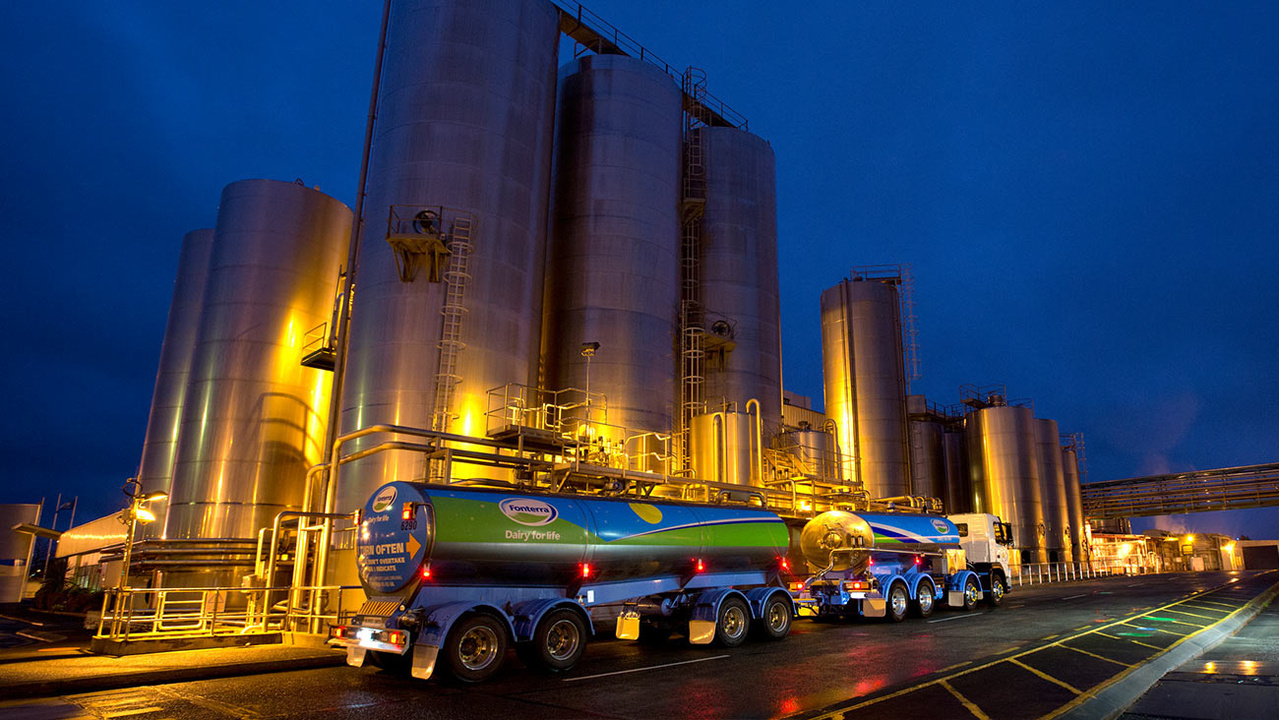How is milk made?
Let’s go on a journey of discovery to find out how we look after Anchor milk – all the way from grass to glass.
Milk: from farm to factory
It all starts at the farm, where chilled raw milk is collected from the farmer and transported to the milk factory in milk tankers. The raw milk is sampled and tested to ensure the milk is high quality. The milk is stored at a chilled temperature at our factory ready to be processed.
Milk nutritional composition is naturally variable, especially across the milking season and even by the breed of cow. To achieve consistent nutrition in every glass of Anchor milk we separate and standardise giving you goodness in every drop
Separation
At the factory, the milk is separated to remove cream from the milk, leaving skim milk.
From there, some of the skim milk goes through a filtration process to separate into two parts of milk. One part is permeate, which is mainly water, lactose, vitamins and minerals. Retentate is the heavier protein component which is retained in the filtration.
Standardisation
We standardise our milk so every glass is consistent in flavour and nutrition. We mix the right amounts of cream, skim milk, retentate and permeate to make a range of different milk. More cream is used to make “Blue Top” milk (3.3% fat), with less cream for reduced fat or light milk and none for skim milk. Extra cream can be used to make products like butter or simply kept as fresh cream. Additional protein and calcium is provided by retentate for products like Anchor Protein+ and Calci+.
See our video on milk separation and standardisation here.
Pasteurisation
The next step in the process is pasteurisation which is when the milk is heat treated to kill harmful bacteria to ensure the milk is safe to drink. Pasteurisation involves heating milk at 72-75˚C for 12-15 seconds. This is well below the boiling point of the milk which allows milk to retain its fresh flavour.
It’s also good to know that pasteurisation doesn’t significantly change milk’s goodness. Milk is naturally rich in essential nutrients, containing high quality protein, calcium, B vitamins, phosphorus and potassium and more. Milk’s nutrition content is not affected by pasteurisation, with the exception of a small decrease (around 5-10%) in some B vitamins.
Homogenisation
After pasteurisation, the milk is then homogenised to prevent the cream portion from rising to the top. This involves squeezing the milk through a narrow gap at high pressure which then breaks up the already tiny milk fat droplets into even smaller droplets. This prevents the fat from rising to the top as quickly, keeping it evenly distributed throughout the entire bottle. Homogenisation is used on most fat-containing milk except milk like Anchor Silver Top which is only partially homogenised so the cream will rise to the top (for those who love a bit of extra indulgence!).
Packaging and storage
The different types of milk and cream are chilled down to 2-4°C and packaged. Anchor use the Light ProofTM bottle which protects milk from the damaging effects of UV light. This ensures that the milk tastes fresh and delicious throughout its journey from factory to your glass.
